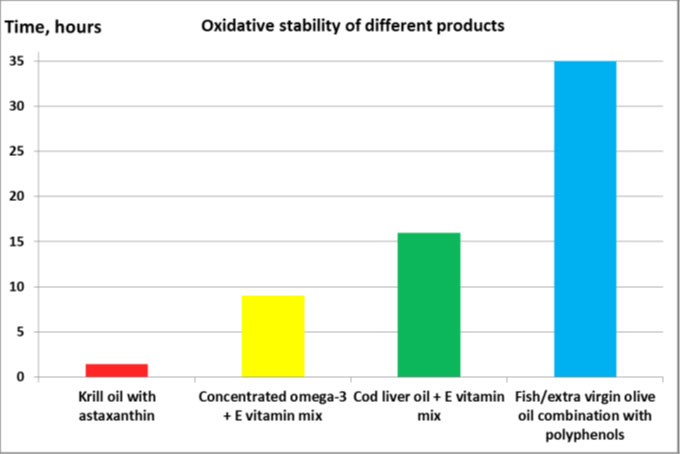Does Fish Oil Effect Your Overall Brain Health?

Omega 3 And Brain Health
Research in the recent years indicates that there is a link between Omega 3 and Brain Health.
The Brain contains almost 60% fat and out of that, the primary type of fat is DHA (Docosahexaenoic acid) which is found in fish oil and marine algae.
In the last couples of years, we have learned that fatty acids are among the most crucial molecules that determine the brain’s integrity and ability to perform.
There are a lot of scientific studies that suggest, that the rise of brain-related mental disorders such as depression, anxiety, bipolar disorder… etc. is related to an imbalance in the fatty acids omega 6 and omega 3.
Silent Chronic Inflammation
This imbalance can cause a silent chronic inflammation in the body and in the brain. This doesn’t mean that you can feel it in the brain since the inflammation is on a cellular level.
If you think about it, it kinda makes sense, that having a lack of omega 3 can have an effect on the mental health, since approximately half of our brain is composed of DHA, one of the two main components of omega 3 fatty acids, where the other is called EPA (Eicosapentaenoic acid).
Both Omega 6 and omega 3 are called essential fatty acids because the body can’t produce it by itself and need it from an outside source.
We need both in our body in order for our cells, immune system, brain, skin, eyes, bones and actually the whole body to function optimally.
Omega 3 fatty acids
Omega 3 fatty acids from marine algae, fish and fish oils are not to be confused with those from plant sources, such as flax and canola oil.
These plant oils are enriched in an omega-3 fatty acid called α-linolenic acid (ALA), which is a metabolic precursor of the omega-3 fatty acids found in fish and fish oils.
It is possible to convert a small amount of α-linolenic acid to the beneficial EPA and DHA, but it is only in the range of a 2-5% conversion if you eat a typical western diet.
Omega 3 fatty acids and cell health
Omega 3 fatty acids play a crucial part in the body’s cells, where they are incorporated into the cell membranes in all tissues of the body.
Cellular membranes from some tissues (e.g, retina, brain, myocardium) are particularly enriched in these fatty acids.
The fact that these and other cells have developed the cellular machinery to preferentially incorporate these minor dietary components into their membranes suggests that these fatty acids play a role in the proper function of the cell.
Omega-3 fatty acids are essential nutrients that cannot be synthesized in the body and must be obtained from the diet.
Dietary omega-3 fatty acids are incorporated into cellular membranes of all tissues. The extent of incorporation into tissue membranes is dependent on dietary intake.
The enrichment of membranes with omega-3 fatty acids can modulate cellular signaling events, membrane protein function, and gene expression.
Consumption of recommended intakes of omega-3 fatty acids may lead to a general increase in the overall health and well-being of the population.
The science behind dietary omega-3 fatty acids
Dr. Marc E. Surette, PhD, Département de Chimie et Biochimie, Université de Moncton, Moncton
Omega 6 And Omega 3 Balance
Omega 6 is normally contributed to creating inflammation, which we need when we get hurt, as an example.
Omega 3 is known to be anti-inflammatory and kicks in to clean up after the inflammation has done its work.
Most people have an imbalance between the two fatty acids omega 6 and omega 3, where the dominant omega is omega 6.
So what is causing this imbalance?
Our bodies DNA was programmed from the early humanity, to have a balance between omega 6 and omega 3 in a ratio of 1:1.

Up until the 1960’s, our omega balance was in an average ratio of 4:1

But then something happened in the food industry that changed it all, omega 6 was added to most of the processed foods because it was cheap and has conservating abilities.
The fast-food era had begun.

This is one of the main reason we are seeing in an explosion of the imbalance of the omega 6:3 ratio in most of the world. Actually, there are only a few places in the world where the population is in a proper omega 6/omega 3 balance, those places are known as the “Blue Zones“.
Test Your Own Omega 6/3 Balance
It is possible to test your own omega 6/3 balance with a Zinzino Balance Test. You can obtain an omega 6:3 ratio of 3:1 by using their BalanceOil, a powerful mix of high-quality omega 3 added a high-quality polyphenol from pre-harvested olives.
The reason Zinzino blends the Omega 3 with polyphenols, is that polyphenols are a natural antioxidant present in fish. Most fish oils get the polyphenols removed during the refining and cleaning process, thus making the oil more vulnerable to oxidation. They are then mostly added the vitamin E as an antioxidant, which is too weak and the omega 3 tends to get oxidated in the body before you can uptake it on a cellular level.
In the graph below you can see the difference between the variations of omega 3 products and the time it takes before they get oxidated.

AOCS Official Method Cd12b-92
Average of 3 analysis at 70°C SINTEF – Fisheries and Aquaculture – August 2010
Learn more about the Balance Concept HERE
Please feel free to ask questions or leave a comment below.